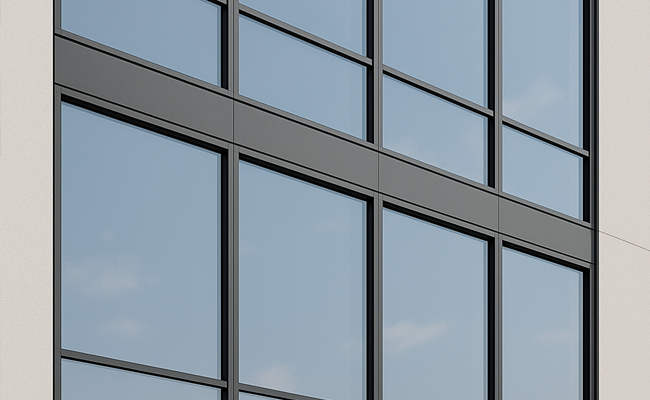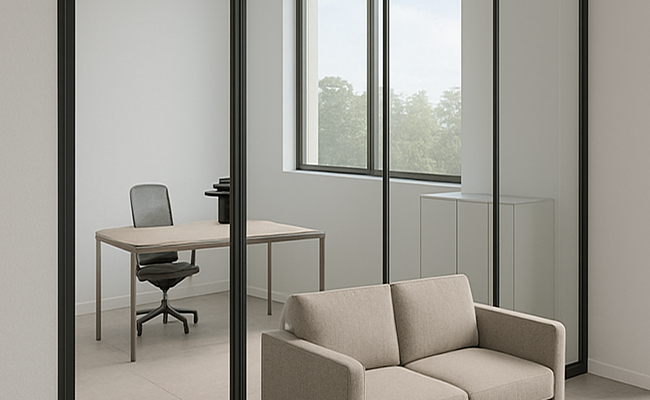Luxury at sea
The largest ships in the world and the most luxurious yachts are simply stuffed with splendour, wealth and ... glass, which affects not only the aesthetic values, but also determines the functionality of the vessel and increases the comfort of its use.
In December 2022, Icon of the Seas was launched – the largest cruise ship in the world. The colossus is 365 m long and can accommodate up to 7.6 thousand guests in 2805 cabins. The ship is considered the most modern, not only because of the use of new technologies, but also due to the use of appropriate materials, including glass made in Poland.

Designers of luxury ships try to ensure that the effect of their work is an attractive hull shape and outstanding interior aesthetics. For this purpose, they use large glazing that is in line with current trends. It provides a beautiful view from the interior of luxury cabins, but also determine how the ship can be used. In this case, glass is not only a decorative material, but also has many other important functions. It is therefore used in various forms, sizes, thicknesses and colours.
A wide range of materials and the latest technologies allow you to turn ships into extraordinary spaces that amaze you at every turn. On board there are not only comfortable cabins, but also cinemas, libraries, gyms, spas and even helipads. However, it is the glass used that elevates these ships to a higher level of luxury, and it's not just about the large windows. On one of the most expensive yachts in the world there is a glass control panel with which you can raise and lower the sails, and even control their operation.
Changes made possible by technology
Glass used on ships is designed in a different way than glass façade elements in buildings. This is due to very restrictive safety requirements on vessels. If glass is a structural element, it must be characterized by appropriate load-bearing capacity and safety factors. You should be aware that the glass placed on ships must withstand much greater loads (e.g., caused by a hurricane or the impact of sea waves), which can be many times greater than the standard wind load for buildings. A frequent requirement is the use of laminated toughened glass with the use of SentryGlas® type polymers. Such a film will ensure full cooperation between the glass panes, which increases strength and guarantees partial load-bearing capacity even in the event of glass breakage.
The possibility of using large glazing, as well as insulating glass units with various types of functional coatings is due to the development of technology. In the past, glass on ships took the form of small windows embedded in solid and visually heavy steel frames. Currently, glass units can be larger because appropriate processing ensures their durability and strength. In turn, modern coatings can make the glass anti-corrosion, protecting against heat loss or excessive heating of the interior. There are many possibilities, which ship designers are happy to use.

Pilkington Glass on the seas and oceans
Glass used on vessels sailing around the globe is produced, among others, in Poland. Pilkington IGP, the Polish glass processor, has been supplying glass for shipbuilding for over a dozen years, cooperating with shipyards in Finland, France and even Japan.
Pilkington IGP supplied approx. 1000 m2 of insulated glass units for the aforementioned Icon of the Seas – the world's largest cruise ship.
“This is the second time we deliver glass to the largest cruise ship in the world. Previously it was Oasis of the Seas and now Icon of the Seas. This time, the order was for Pilkington Suncool™ 60/31 T glass, which was used in the luxury cabins as glass doors. Thanks to its properties, it will protect the interior from overheating and guarantee access to natural daylight. It is worth noting that this batch of glass was manufactured in such a way as to meet the requirements for glass used on ships, which means additional sealing with silicone and toughening according to a special standard required by the shipbuilding industry. Its thickness has been selected for the heavy loads it can withstand, e.g., during a hurricane” – explains Michał Wąsowicz, Export Projects Manager.
Although the glass produced at Pilkington IGP is usually intended for the window industry, we regularly fulfil orders for glass for ships or yachts. They are assembled by contractors from various parts of the world for the needs of private individuals as well as large companies. One of such orders concerned the Allure of the Seas cruise ship built in Finland, the other – Oasis of the Seas. There was also an opportunity to start cooperation with a Japanese shipyard, where the Aida ship was being built at the Mitsubishi shipyard.






























